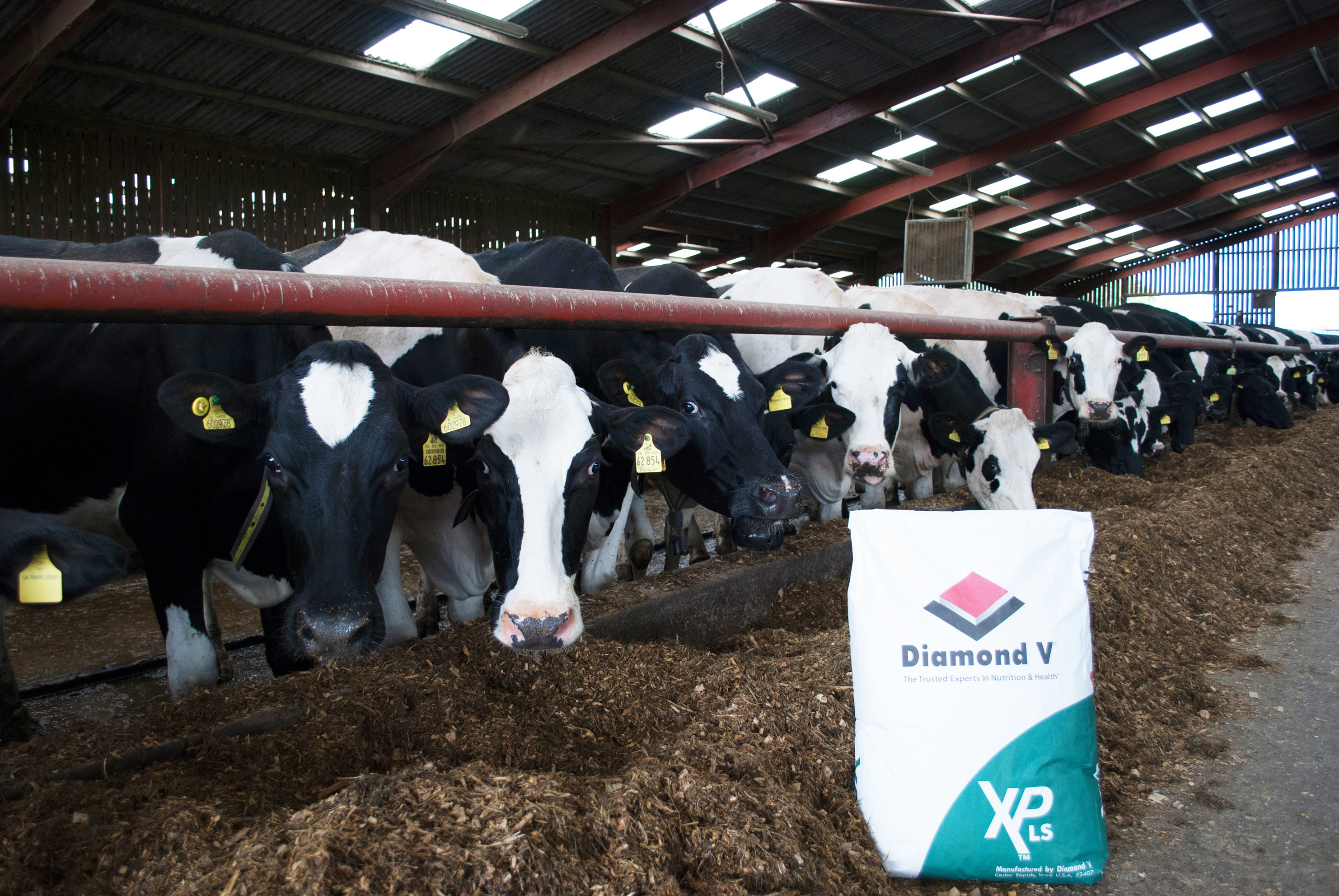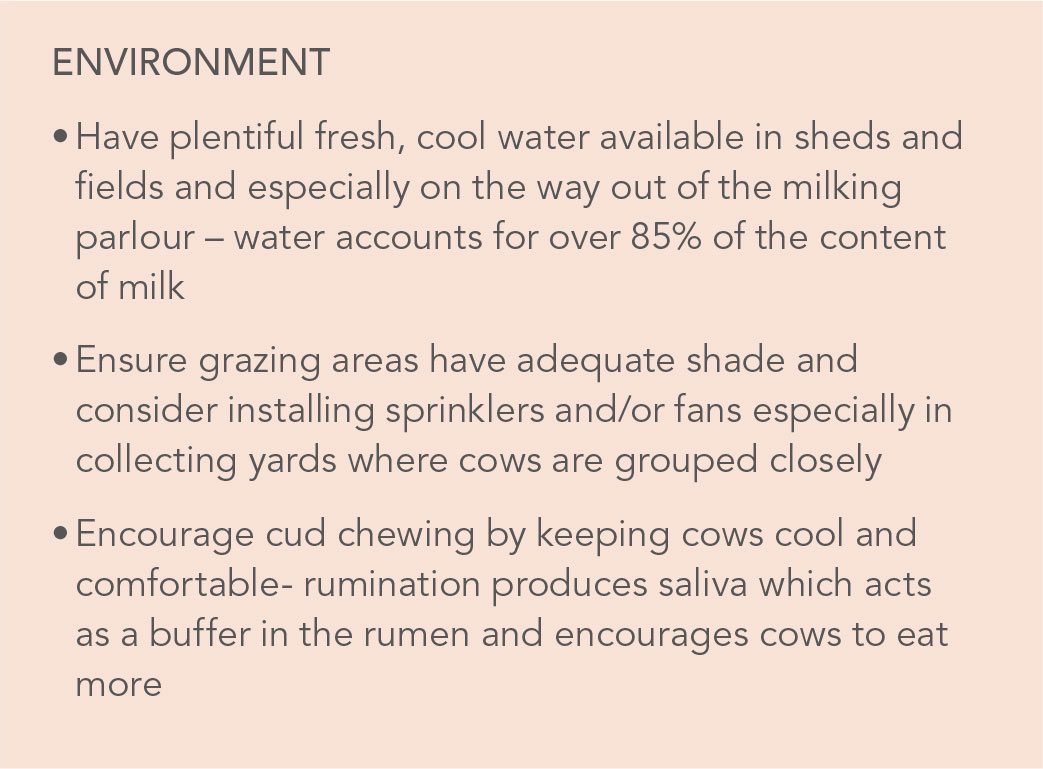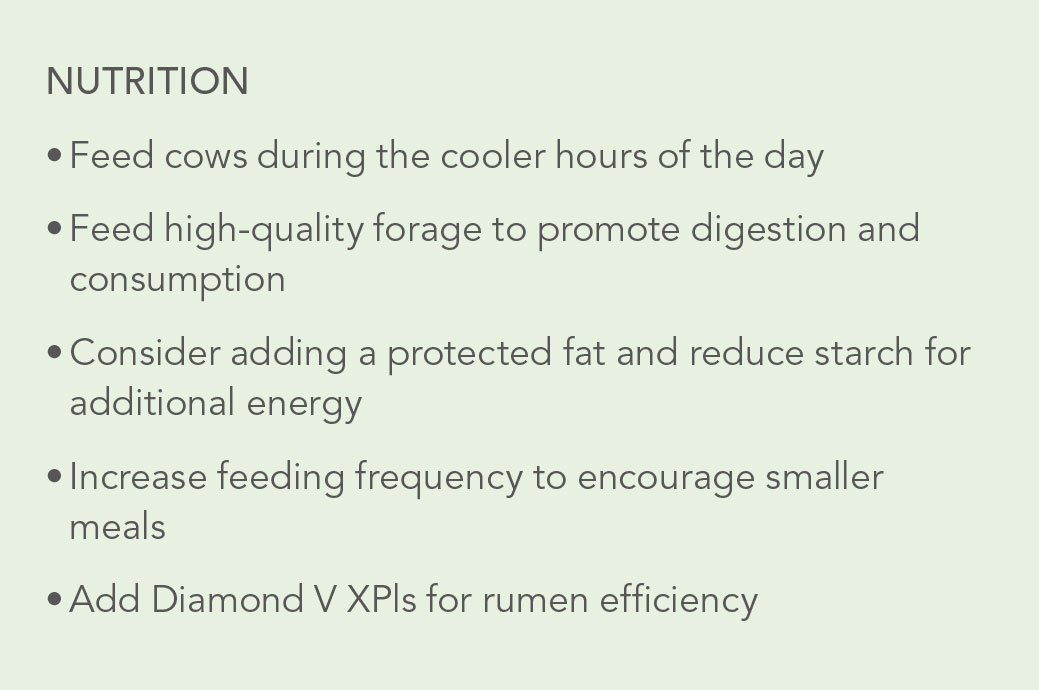Don’t be Fooled by UK Summers Where Heat Stress is Concerned
Rising summer temperatures have been matched by rising summer milk prices meaning that any reduction in output will now have a larger financial impact. With dry matter intake (DMI) typically being the first driver of output and cow performance then every 0.5kg reduction in DMI can lead to around 1kg of lost production leaving producers out of pocket by £20-25/day for every 100 cows in the herd.

Heat stress is known to impact cow health and productivity once ambient temperatures rise above 22°C through depressed dry matter intakes which have been estimated to fall by as much as 8-12% as temperature rises. This, in turn can reduce milk production by up to 20% with cows suffering the effects of heat stress also often exhibiting a reduction in milk fat production linked to suboptimal rumen conditions.
A reduction in milk production is a clear sign of heat stress, however, the initial signs of moderate heat stress can often be rapid shallow breathing. Heat stress is likely if respiratory rates are greater than 80 breaths per minute in 70% of the herd so observing cows throughout the day (at milking especially whilst waiting to be milked) will help establish the first signs of heat stress in animals. Furthermore, higher producing dairy cows will be more susceptible to heat stress as a result of their higher dry matter intake, resulting in more metabolic heat generated as they process greater quantities of feed on a daily basis.
Combatting heat stress can be viewed as a two-pronged approach: environment and nutrition as outlined below.


It is also worth considering incorporating a supplement such as Diamond V XPLS into cow’s diets. XPLS is a fermentation product manufactured through a unique propriety process which results in multiple compounds that work together to improve animal health and production.
In a heat stress situation, the addition of XPLS to the diet helps optimise the efficiency and functionality of the rumen microbes with improved rumen microbial activity helping increase feed utilisation.
As appetites decrease in hot weather, improved digestibility optimises feed nutrient availability for production and reproduction. Feeding XPLS throughout the at-risk periods for heat stress can therefore help to minimise the negative impact of heat stress on milk fat and maintain production efficiency of dairy cows.
DOWNLOAD your FREE heat stress measurement chart.
For further information or to find a stockist please contact us.